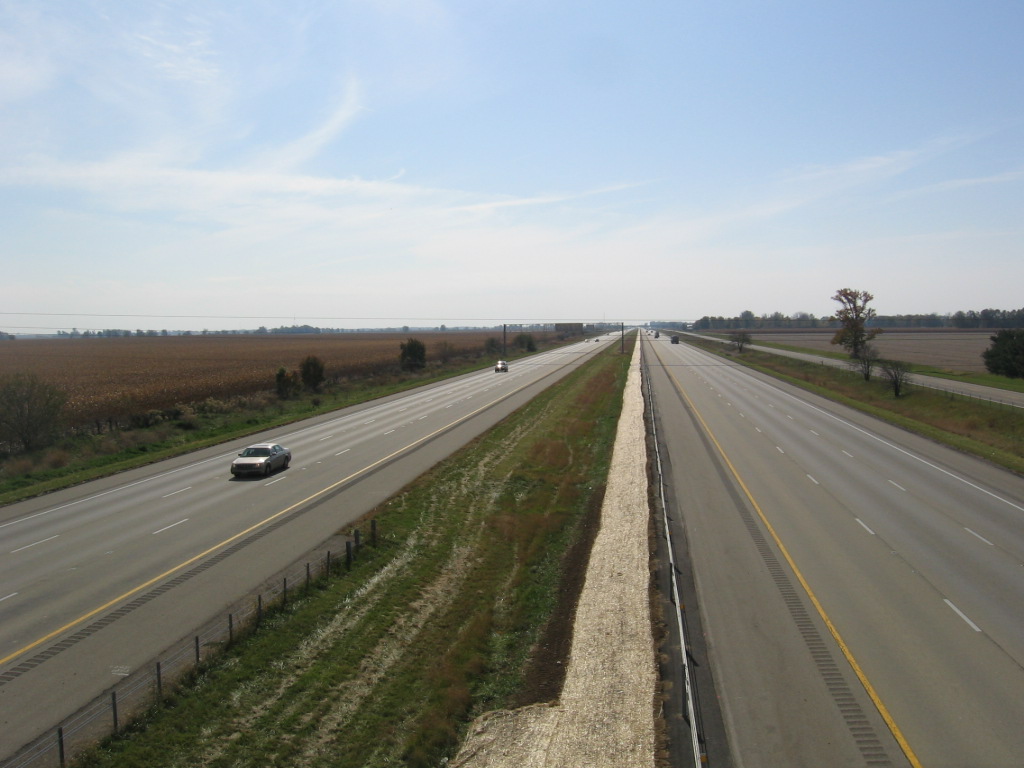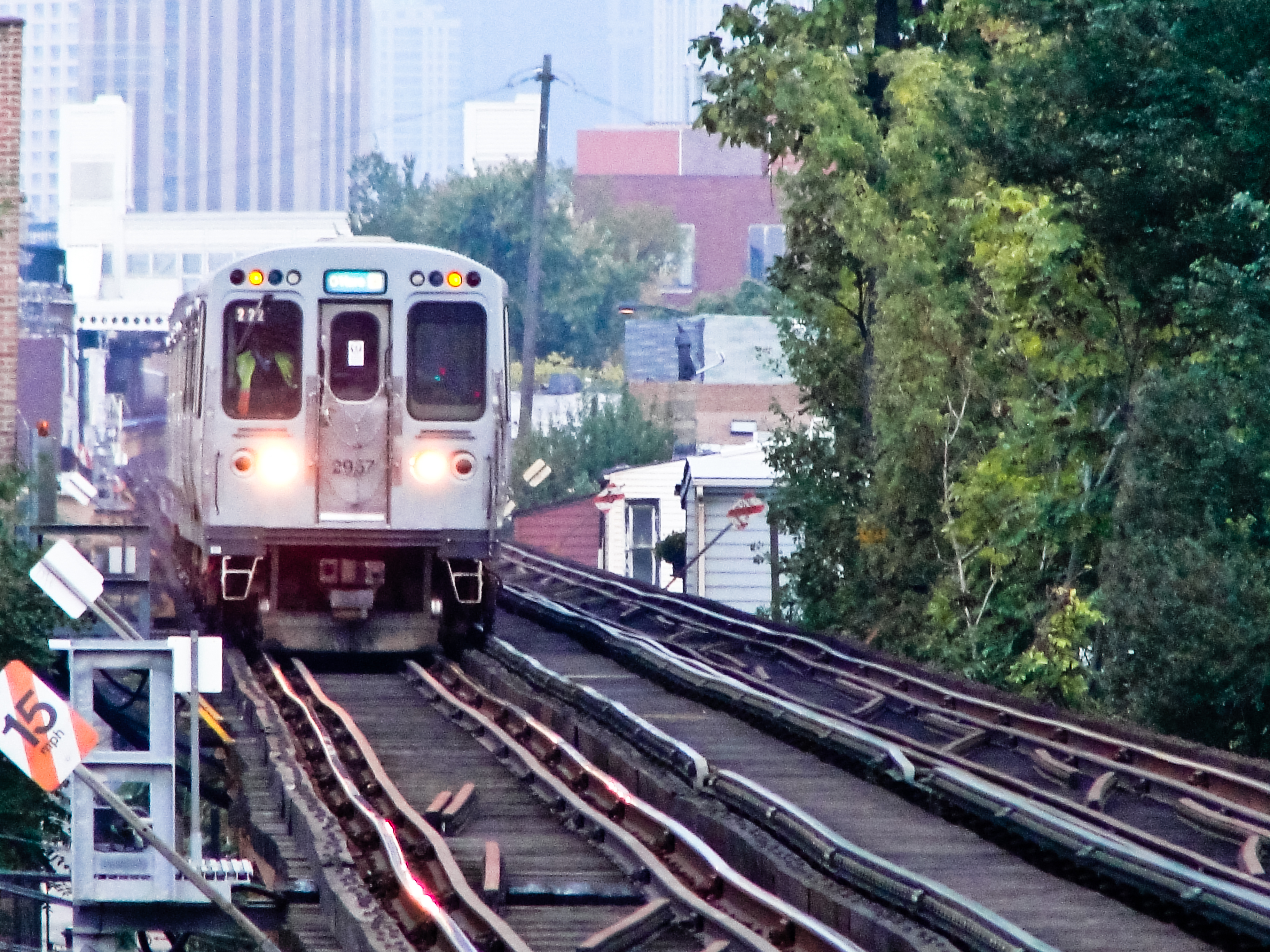(This post also appears in Going Places, a policy blog by CNT’s Jacky Grimshaw)
I recently read the U.S. PIRG Education Fund’s excellent new report, Highway Boondoggles: Wasted Money and America’s Transportation Future. I couldn’t help thinking about the decision(s) looming in CNT’s backyard about the proposed Illiana Expressway.
Highway Boondoggles focuses on the national and local mismanagement of funding allocated to highway construction projects and the negative economic, social, and environmental consequences that such boondoggles might have. The report reminds us that seventy years ago, following the end of WWII, our federal government unwittingly sparked a cycle of highway development and automobile dependence. For the first 50 years of this cycle all of this construction and change felt like progress. The Silent and Baby Boomer generations greeted this new world of highways, automobiles, and the corresponding suburban sprawl with open arms. It was a major step, literally and metaphorically, away from the poverty, pollution, and congestion that plagued so many large American cities during that era.
But our generational preferences started to change. For the first time in 90 years, cities are growing faster than suburbs. In 2013, national transit ridership reached its highest point since 1956, proving that the use of non-driving modes of transportation is on the rise. As of 2009, young Americans drove 23% fewer miles than they did in 2001, a trend which looks to continue given the large size of the Millennial generation.
With trends changing, why build infrastructure that future generations may not want? Unfortunately, the demographic projections used to justify the Illiana proposal miss this point. They simply assume that the preferences of the last thirty years will continue into the next thirty and that we should build tomorrow’s infrastructure to meet yesterday’s wishes. A raft of research, includingHighway Boondoggles, shows how dangerous – and costly – these assumptions can be.
Furthermore, from an environmental viewpoint, the Illiana would cut across the far southern reaches of the Chicagoland region, chewing up farmland, forests, and prairieland for new development. Given the trends, there is no justification— social, environmental, or economic – for building the Illiana.
As I read through the report, I couldn’t help but think about Charles C. Mann’s 1491 and the case of the ancient Incan road builders. The Incan civilization reached its cultural peak over 500 years ago, but declined as a result of political instability, conquest, and environmental degradation. Before the civilization completely fell apart, however, Inca leaders were almost single-mindedly concerned with something that one wouldn’t necessarily expect: road building. Unable recognize the problems they faced and thus reorganize their institutional priorities, the Incan government just kept building roads and building roads and building roads. This building of roads did nothing to remedy their decline.
Are we heading in the same direction as the Inca? Let’s hope not. Still, let’s not tempt fate by building a road we know is financially, socially, and environmentally unsound.
Because we know better. Modern-day urban planners, environmental scientists, economists, and politicians have the tools to ascertain that spending billions of dollars on highway projects that don’t serve the greater economic and social good are not worth prioritizing over projects such as Transit Future, which seeks to revitalize, modernize, and expand a more ecologically sustainable and socially viable form of transportation.
With strong leadership, we can move away from wasteful boondoggles like the Illiana. On Wednesday, October 8, the Board of Directors of the Chicago Metropolitan Agency for Planning (CMAP) will convene to consider the update of GO TO 2040, our region’s first integrated land use and transportation plan. A day, later the MPO Policy Committee will also convene and vote on the update. GO TO 2040 originally called for doubled transit use and the redevelopment of 100,000 acres of underutilized land by 2040. But it now includes the Illiana, which moves our region away from these shared regional goals. On Tuesday and Wednesday, CMAP’s Board and the MPO Policy Committee have the opportunity to remove this boondoggle from our list of regional priorities once and for all. I hope they do.
…
About the author: Jacky Grimshaw, Vice President of Policy, Center for Neighborhood Technology
Jacky joined CNT in 1992 and has since developed its capacity to engage in public policy advocacy, transportation research, public participation tool development, GIS mapping, and community economic development. Jacky created and has led CNT’s transportation and air quality programs and has led CNT’s Transit Future Campaign in the fight for mass transit reform in the Chicago region.
Tags: Boondoggles, Center for Neighborhood Technology, Chicago, CNT, IIlliana Expressway, IL, Illinois, Jacky Grimshaw








 RSS Feed
RSS Feed